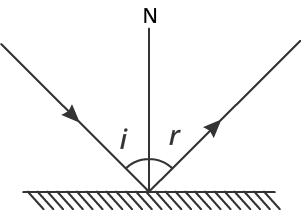Laws of Reflection
Laws of Reflection: Overview
This topic describes the laws of reflection. It explains incident ray, reflected ray, angle of incidence and reflection to understand the laws of reflection clearly. The laws are explained by the activities.
Important Questions on Laws of Reflection
At the point of incidence, incident and reflected rays make _____ angle with the reflecting plane surface.
A non-luminous object can only be seen if the light
Light is falling on surface S1, S2 and S3 as shown in the figure below.

On which of the three surfaces, the angle of incidence will be equal to the angle of reflection?
Fill in the blank.
The angle between the incident ray and the normal is called as the angle of _____.
The angle of incidence for a plane mirror is . What will be the angle between incident and reflected ray?

Which of the following option is correct regarding the necessity to see an object?
According to the law of reflection of light, the angle of the incident ray is equal to the angle of reflected ray.
If the light is incident perpendicular to the mirror then the angle of reflection is .
Draw a labelled Diagram of reflection by plane Mirror.
Angle of reflection is greater than the angle of incidence.
What is the relation between angle of incidence and angle of reflection?
The angle of incidence is _____ to the angle of reflection.
Explain the laws of reflection of a plane mirror.
What is the angle of incidence if the angle of reflection is 45 degree in a plane mirror?
